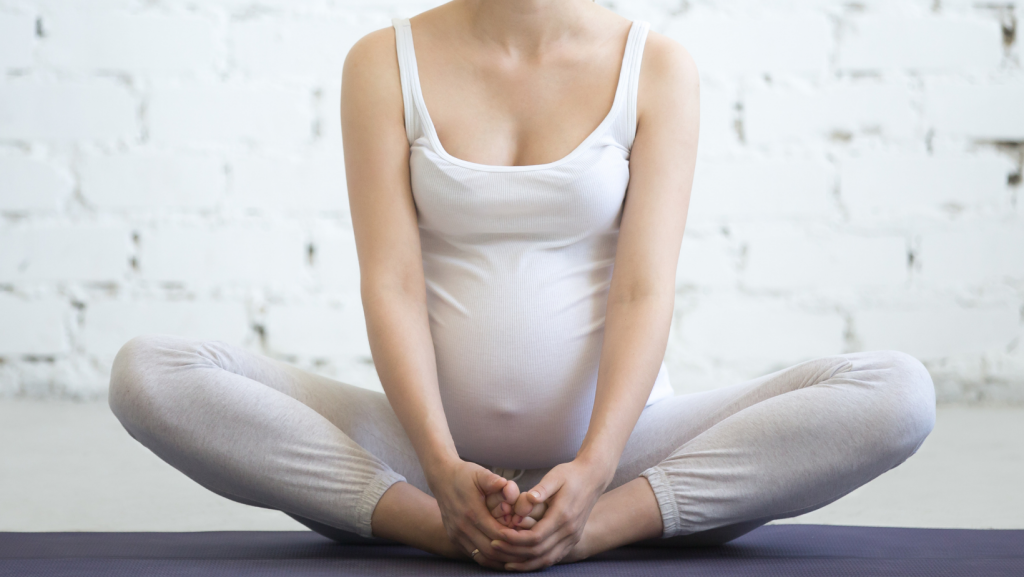
Prenatal & Pregnancy Chiropractic care
Pregnancy is a special time for both the Mum-to-be and the baby. Many Chiropractors focus on specific methods of chiropractic care that are best suited to support this wonderful process right through birth. They also have knowledge and training about the pregnant body and pregnancy-related pain and discomfort. Prenatal chiropractic also focuses more on the pelvis to help with pelvic alignment. This aspect is crucial for easing discomfort, particularly in the final trimester.
Expectant mothers often turn to chiropractic care as an alternative method to mitigate back and pelvic pain, which affects about half of all pregnant women. Additionally, a significant percentage of 50% and 75% experience back pain during labour. Studies indicate that chiropractic interventions can alleviate symptoms in up to 85% of women dealing with significant lumbopelvic pain during pregnancy (Borggren, 2007).
Pregnancy-focused chiropractors employ gentle techniques for both the mother and the baby. They are adept at adjusting their methods to ensure comfort throughout the various stages of pregnancy.
Physical Changes During Pregnancy and Chiropractic Care
Pregnancy introduces numerous hormonal and physical changes, impacting posture and comfort levels. As the baby’s weight increases, there’s a shift in the body’s centre of gravity, leading to biomechanical adjustments and potential stress in the neuromusculoskeletal system.
These changes often result in a misaligned spine or joints and other discomforts such as:
– Increased back curvature due to a protruding abdomen
– Pelvic changes in preparation for labour
– Postural adaptations due to the changes in the centre of gravity
Chiropractic evaluation and treatment during pregnancy can offer relief from these musculoskeletal symptoms. It’s a recognised method for addressing common discomforts experienced by pregnant individuals and with a proven track record and remarkable history of safety. A recent review of 2019 by Safer Care Victoria reported no instance of significant harm to a child by chiropractic treatment in the Australian literature, and more than 98% of parents reported a positive response to care.
Post-Natal Chiropractic
Postnatal chiropractic care focuses on addressing musculoskeletal issues after delivery, including lower back pain, pelvic pain, nerve pain, and postural problems resulting from factors like pregnancy weight gain, labour, carrying a baby postpartum, and breastfeeding.
Persistent poor posture can contribute to pain and reduced mobility, necessitating rehabilitation. Research indicates that women experiencing moderate to severe pelvic pain during pregnancy are more likely to have postpartum complaints (Damon et al., 2002). Continued chiropractic care postpartum can aid in restoring normal spinal biomechanics and addressing musculoskeletal health concerns. Postnatal care may include postural assessments, gentle treatments, and guidance for optimal recovery.
Chiropractic Life’s Commitment
Prenatal and Postnatal Chiropractic care is increasingly favoured as a healthcare option due to its natural and non-invasive nature.
Our chiropractic adjustments are designed to be gentle for both mother and baby.
Chiropractic care for children has an enviable safety record. A recent review of 2019 by Safer Care Victoria reported no instance of significant harm to a child by chiropractic treatment in the Australian literature, and more than 98% of parents reported a positive response to care.
To make an appointment with one of our registered chiropractors, please visit www.chiropracticlife.com.au/locations to find a convenient location near you.
References
1. Diakow P.R.P., Gadsby T.A., Gadsby J.B., Gleddie J.G., Leprich D.J., Scales A.M. Back pain during pregnancy and labor. J Manipulative Physiol Ther. 1991;14(2):116–118.
2. Berg G., Hammer M., Moller-Nielsen J., Linden U., Thorblad J. Low back pain in pregnancy. Obstet Gynecol. 1988;71:71–75.
3. Fast A., Shapiro D., Ducommun E.J., Friedmann L.W., Bouklas T., Flowman Y. Low back pain in pregnancy. Spine. 1987;12:368.
4. Wang S.M., DeZinno P., Fermo L. Complementary and alternative medicine for low-back pain in pregnancy: a cross-sectional survey. J Altern Complement Med. 2005;11(3):459–464.
5. Clancy F. Patient page: for your health: chiropractic advice for moms-to-be. J Am Chiropr Assoc. 2003;40(11):29–30.
6. Shaw G. When to adjust: chiropractic and pregnancy. J Am Chiropr Assoc. 2003;40(11):8–16.
7. Fallon J.M. Chiropractic and pregnancy: a partnership for the future. ICA Int Rev Chiropr. 1990;46(6):39–42.
8. Jones M. The value of routine manipulation in pregnancy. J Am Osteopath Assoc. 1952;51:554–557.
9. Vallone S. The role of chiropractic in pregnancy. ICA Int Rev Chiropr. 2002:47–51.
10. Bartol K.M. Back to basics: considerations in adjusting women. Top Clin Chiropr. 1997;4(3):1–10.
11. Chalker H.M. Spinal compensation of pregnancy. Am Chiropr. 1993;15(3):23–26.
12. Krantz C.K. Chiropractic care in pregnancy. Midwifery Today. 1999;52:16–17.
13. Pistolese R.A. The Webster Technique: a chiropractic technique with obstetric implications. J Manip Physiol Ther. 2002;25(6):e1–e9.
14. Ohm J. Chiropractors and midwives: a look at the Webster Technique. Midwifery Today. 2001;58:42.
15. Thompson CK. Baby on board: the benefit of chiropractic during pregnancy for both mother and child. J Am Chiropr Assoc 1997; 34(5):17, 95
16. Lisi A.J. Chiropractic spinal manipulation for low back pain of pregnancy: a retrospective case series. J Midwifery Women’s Health. 2006;51(1):e7–e10.
17. Esch S., Zachman Z. Adjustive procedures for the pregnant chiropractic patient. Chiropr Tech. 1991;3(2):66–71.
18. Howe C.A. Scientific ramification for producing pre-natal and neonate chiropractic care. Am Chiropr. 1993;15(3):20–23.
19. Damen L., Bayrak H.M., Guller-Llysal F., Lotgenny F.K., Snijders C.J., Stam H.J. The prognostic value of asymmetric laxity of the sacroiliac joints in pregnancy-related pelvic pain. Spine. 2002;27(24):2820–2824.
20. Borggren CL. Pregnancy and chiropractic: a narrative review of the literature. J Chiropr Med. 2007 Jun;6(2):70-4. doi: 10.1016/j.jcme.2007.04.004. PMID: 19674697; PMCID: PMC2647084.
21. Roecker, Christopher. (2013). Breech repositioning unresponsive to Webster technique: coexistence of oligohydramnios. Journal of Chiropractic Medicine. 2013. 74-78.

Recent Comments